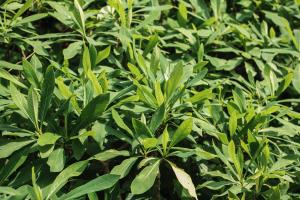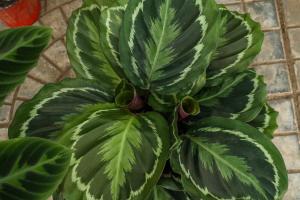Can I Use Raised Bed Soil for Potted Plants?
If you have ever grown plants in a raised bed garden, you may be wondering whether you can use the same type of soil for potted plants. The answer is yes, but with some caveats. In this article, we will discuss the benefits and potential drawbacks of using raised bed soil for potted plants, as well as some tips for making the most of this option.
The Benefits of Raised Bed Soil for Potted Plants
One of the biggest benefits of using soil from a raised bed for potted plants is its nutrient content. Raised bed soil is usually enriched with organic matter and other nutrients to improve plant growth. When used in pots, this nutrient-dense soil can help your plants thrive.
Another advantage of raised bed soil for potted plants is its texture. Raised bed soil is typically loamy, which means that it is made up of a balance of sand, silt, and clay particles. This texture helps the soil retain moisture without becoming waterlogged, providing ideal growing conditions for many plants.
Potential Drawbacks of Using Raised Bed Soil for Potted Plants
While using raised bed soil for potted plants can be a great option, it is important to note that there are also some potential drawbacks. For example, raised bed soil may be too heavy for some types of pots, particularly those made of lightweight materials like plastic. This can make it difficult to move the pots or even cause them to tip over.
In addition, raised bed soil may not be sterile, which can lead to problems with pests, diseases, and weeds in your potted plants. It is important to carefully inspect any soil you plan to use in pots to ensure that it is free from contaminants.
Tips for Using Raised Bed Soil for Potted Plants
If you decide to use raised bed soil for your potted plants, there are several things you can do to optimize your results. First, be sure to choose the right pots for your soil. Heavy, clay pots are ideal for raised bed soil, as they provide stability and allow for good drainage. Alternatively, you can add some perlite or sand to your soil to improve drainage and balance out any heaviness.
Another tip for using raised bed soil in pots is to consider the composition of your potting mix. While raised bed soil is usually nutrient-dense, it may not contain all the necessary micronutrients needed for optimal plant growth. Mixing in some additional nutrients, such as bone meal or blood meal, can help to provide a more complete nutrient balance.
Conclusion
Overall, using raised bed soil for potted plants can be a great way to provide plants with the nutrients and texture they need to thrive. However, it is important to be aware of potential drawbacks and to take steps to optimize your results. With careful attention and some experimentation, you can use raised bed soil to create a thriving, healthy indoor or outdoor garden.

 how many times do yo...
how many times do yo... how many planted tre...
how many planted tre... how many pine trees ...
how many pine trees ... how many pecan trees...
how many pecan trees... how many plants comp...
how many plants comp... how many plants can ...
how many plants can ... how many plants and ...
how many plants and ... how many pepper plan...
how many pepper plan...
































